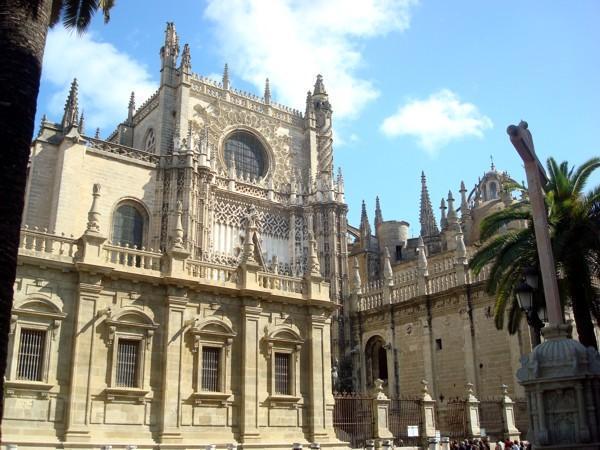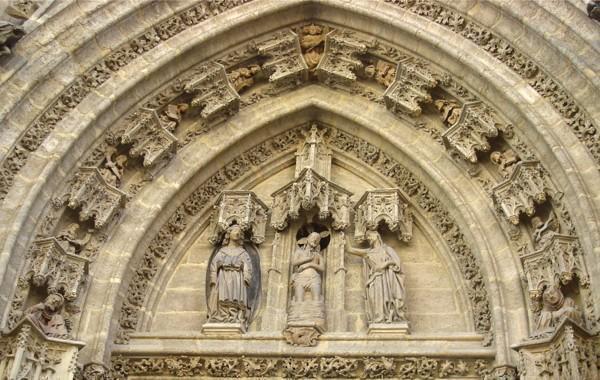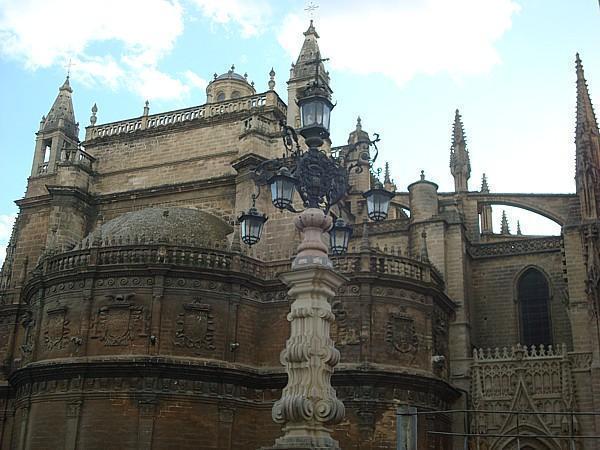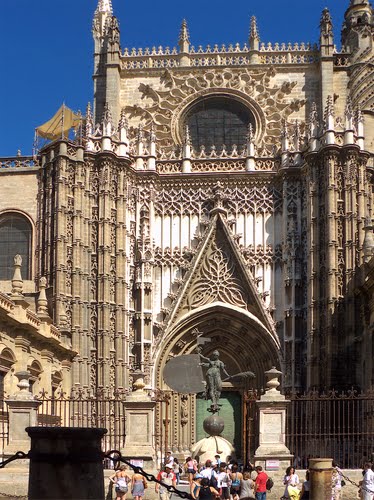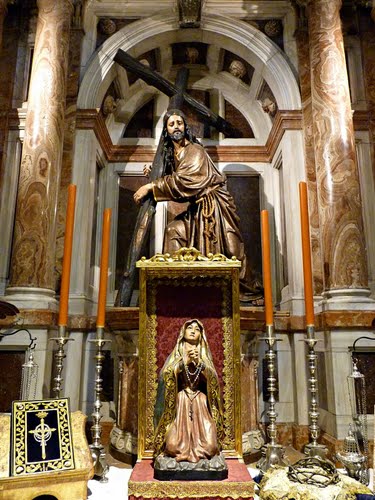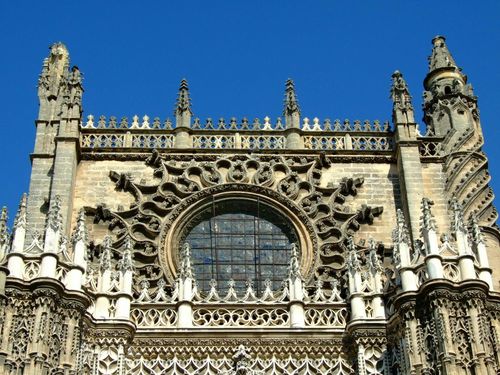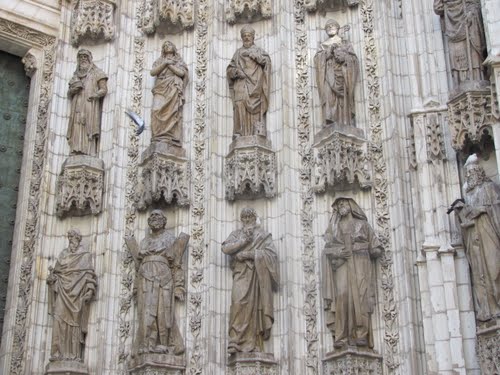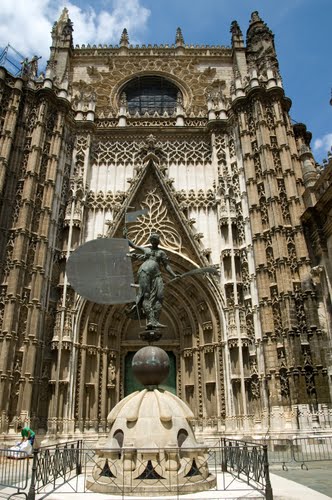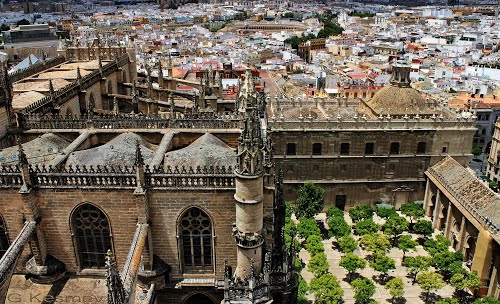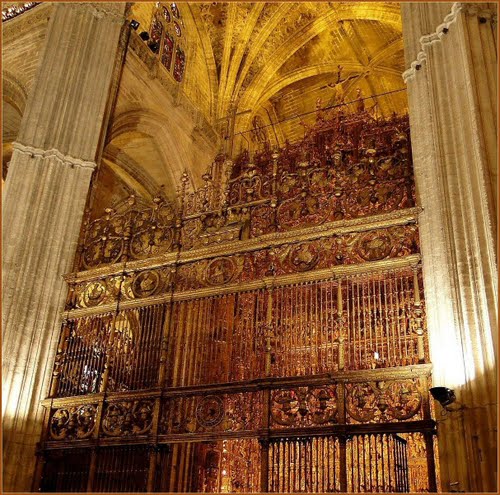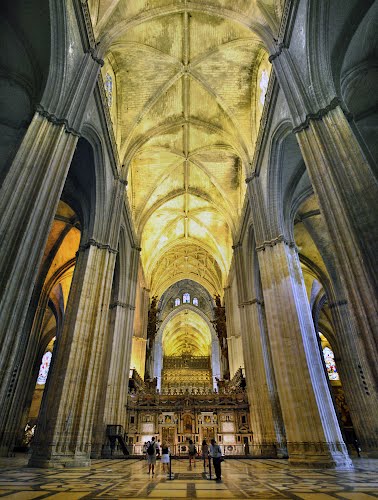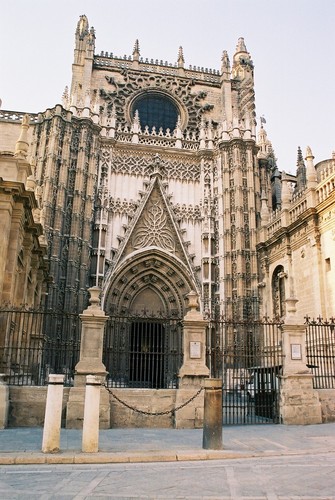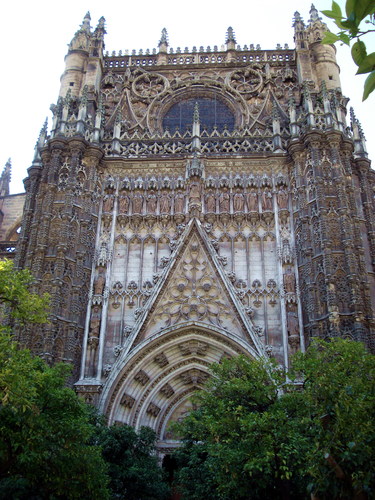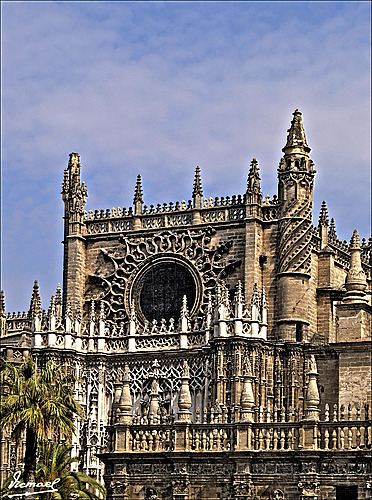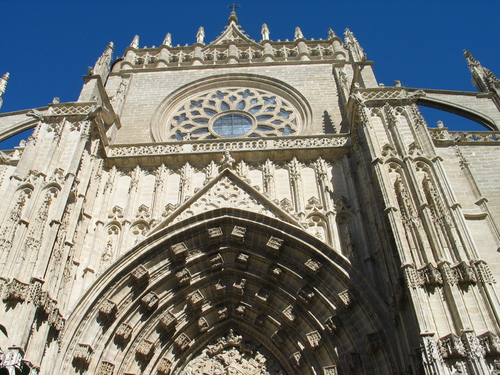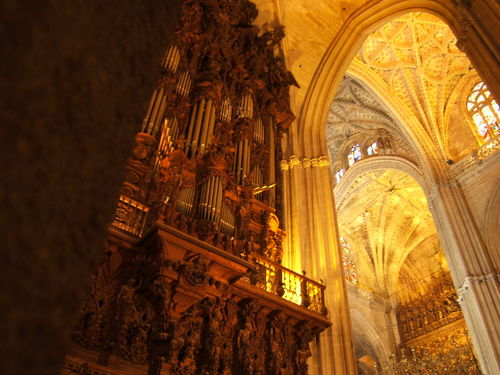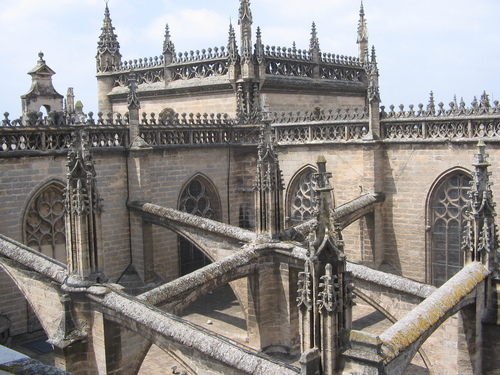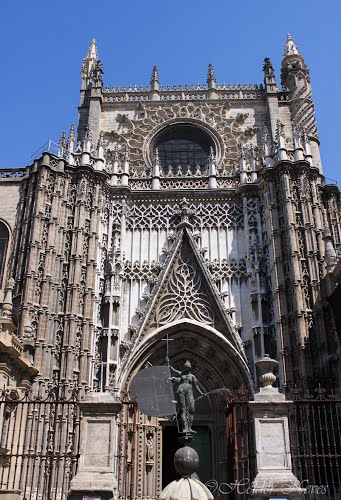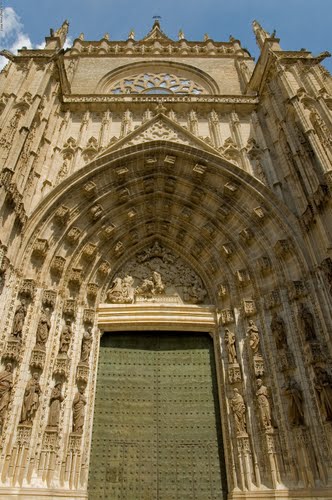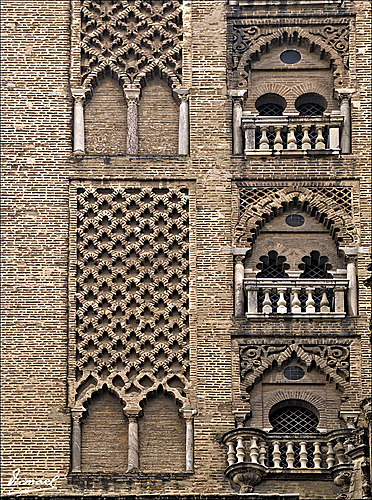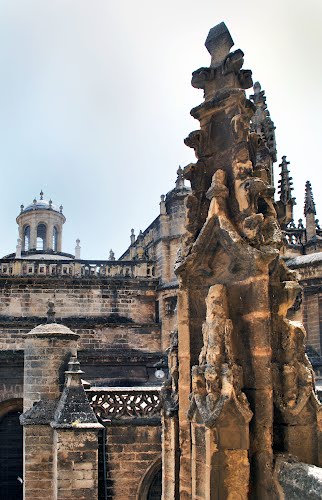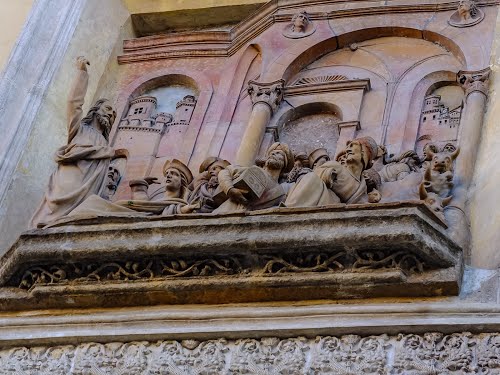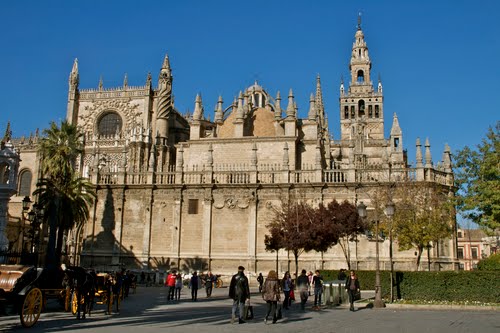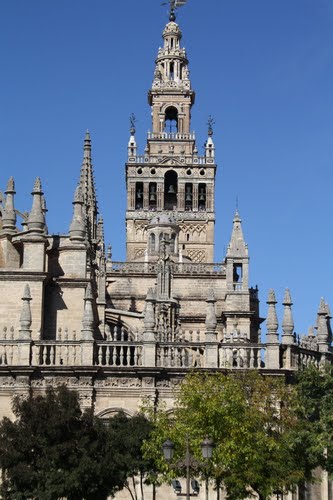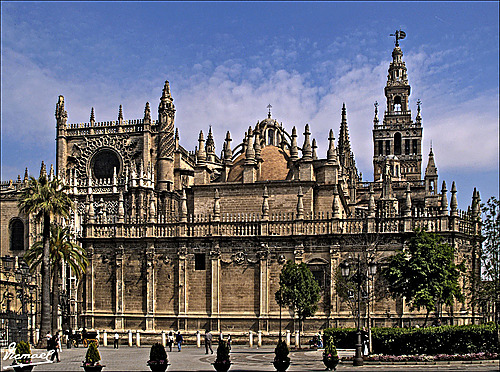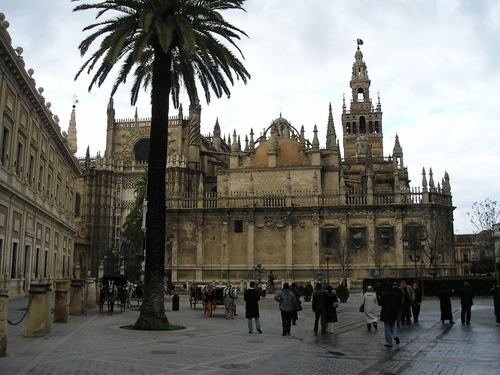The Cathedral of Saint Mary of the See, better known as Seville Cathedral, is a Roman Catholic cathedral in Seville. It is the largest Gothic cathedral and the third-largest church in the world. It is also the largest cathedral in the world, as the two larger churches, the Basilica of the National Shrine of Our Lady of Aparecida and St. Peter's Basilica, are not the seats of bishops. It was registered in 1987 by UNESCO as a World Heritage Site, along with the Alcazar palace complex and the General Archive of the Indies.
After its completion in the early 16th century, the Seville Cathedral supplanted Hagia Sophia as the largest cathedral in the world, a title the Byzantine church had held for nearly a thousand years. The cathedral is also the burial site of Christopher Columbus. The Archbishop's Palace is located on the northeastern side of the cathedral.
Description
Seville Cathedral was built to demonstrate the city's wealth, as it had become a major trading center in the years after the Reconquista in 1248. In July 1401 it was decided to build a new cathedral. Construction began in 1402 and continued until 1506. The clergy of the parish gave half their stipends to pay for architects, artists, stained glass artisans, masons, carvers, craftsman and labourers and other expenses.
Five years after construction ended, in 1511, the dome collapsed and work on the cathedral recommenced. The dome again collapsed in 1888, and work was still being performed on the dome until at least 1903. The 1888 collapse occurred due to an earthquake and resulted in the destruction of "every precious object below" the dome at that time.
The interior has the longest nave of any cathedral in Spain. The central nave rises to a height of 42 meters and is lavishly decorated with a large quantity of gilding. In the main body of the cathedral, the most noticeable features are the great boxlike choir loft, which fills the central portion of the nave, and the vast Gothic retablo of carved scenes from the life of Christ. This altarpiece was the lifetime work of a single craftsman, Pierre Dancart.
The builders used some columns and other elements from the ancient mosque, including its minaret, which was converted into a bell tower known as La Giralda, now the city's most well-known symbol.

